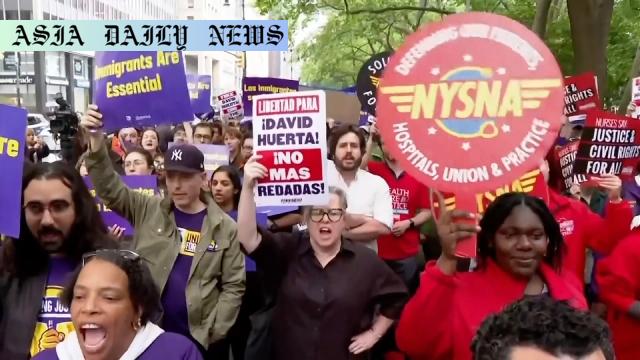Marines: Defense Secretary Pete Hegseth announced the deployment of 700 Marines to Los Angeles in response to immigration protests.
Defense Secretary Pete Hegseth announces deployment of 700 Marines to Los Angeles.
California Governor Gavin Newsom criticizes the decision as excessive.
Protests against immigration policy have spread nationally, increasing in intensity.
Marines equipped with helmets, shields, and gas masks raise concerns over militarization of public spaces.

Introduction: Marines Deployment to Address Unrest
The Trump administration’s decision to deploy 700 Marines to Los Angeles in response to immigration protests has sparked widespread debate. The protests, which started due to a crackdown on undocumented immigrants, have seen increasing tension and occasional violence over the past week. To address these developments, Defense Secretary Pete Hegseth confirmed the deployment, marking the first instance since the 1992 Los Angeles riots that Marines have been sent to quell civil disorder. This bold decision has drawn both support and criticism from across the nation, amplifying existing divisions on immigration policies and the use of military force.
Historical Context and Precedent
The deployment of Marines to manage domestic civil unrest is an extraordinary action that evokes memories of the 1992 Los Angeles riots, where over 50 people lost their lives, and the city suffered immense economic losses. Historically, such deployments signal the federal government’s intention to exert significant control over escalating situations. However, critics argue that using military force, especially for immigration-related protests, sets a problematic precedent. The image of heavily armed military personnel equipped with helmets, shields, and gas masks in public spaces raises questions about the militarization of civilian encounters and whether this approach is proportionate to the protests’ nature.
National Reactions: Support and Opposition
California Governor Gavin Newsom has been one of the most vocal opponents of the deployment, calling it an excessive measure that will exacerbate tensions rather than quell unrest. According to Newsom, the administration’s decision reflects an inflexible stance on immigration policies and an unwillingness to address the protesters’ concerns effectively. Meanwhile, supporters of the move argue that it is necessary to maintain law and order, especially given reported instances of violence during protests. As the protests expand to major cities including New York, San Francisco, and regions in Texas, the nation’s closely divided opinions on immigration policy continue to surface prominently.
The Broader Implications of Militarized Policing
Beyond Los Angeles, the deployment of Marines raises broader concerns about the militarization of policing in the United States. The sight of military personnel patrolling American streets underscores a growing trend where civil disputes are handled with increasing force. Critics argue this approach risks alienating those exercising their constitutional right to peaceful protest while escalating the perception of protesters as threats. Furthermore, deploying military resources to civilian protests diverts attention from addressing root causes of discontent, including immigration policy reform, economic challenges, and systemic inequality.
A Call for Dialogue and Reform
The current wave of immigration protests underscores the pressing need for dialogue and policy reform rather than militarized responses. Protests are often born from frustration over political inaction and serve as a mechanism for citizens to express their grievances. Addressing these grievances requires transparency, understanding, and willingness from policymakers to engage in constructive conversations. As tensions remain high, stakeholders at both federal and state levels have an opportunity to demonstrate leadership by prioritizing comprehensive immigration reform and ensuring that public safety measures align appropriately with impact and necessity.
Commentary
A Controversial Response to Civil Unrest
The deployment of 700 Marines to address immigration protests in Los Angeles has sparked intense debate and divided opinion, reflecting broader societal struggles regarding immigration and the appropriate role of military force in civilian protests. On one hand, public safety is a legitimate concern when protests escalate to violence; ensuring order becomes a priority to prevent harm to both demonstrators and bystanders. However, using military personnel to contain a largely domestic and civilian issue raises valid concerns about proportionality and civil liberties.
Impact on Public Perception and Future Protests
For many Americans, the sight of armed Marines in urban streets will likely evoke discomfort, especially given the nation’s focus on protecting democratic freedoms like the right to assembly. While the protests in Los Angeles have taken a violent turn in some instances, the majority of participants are exercising their rights to express legitimate grievances with immigration policies. Militarizing public demonstrations may dissuade people from protesting in the future, not because of a lack of conviction, but out of fear of facing heavily armed forces. This can erode the democratic principle that dissent is a vital part of societal progress.
A Need for Comprehensive Solutions
Instead of a show of force, the administration should focus on addressing the root causes of immigration protests. A re-evaluation of federal immigration policies, alongside compassionate and practical reforms, would serve as a more effective and sustainable solution to current discontent. Engaging with state leaders, activists, and immigrant communities can foster a more inclusive dialogue, paving the way for progress. At the same time, measures to address public safety should prioritize de-escalation tactics over military intervention to build trust between authorities and communities.


